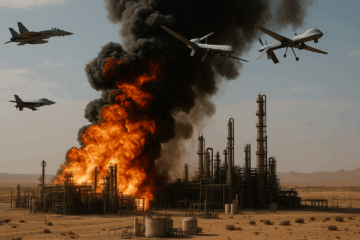The Washington Post editorial board’s November opinion, “A new nuclear arms race is here: How to slow it down,” may receive the cheers of the Beltway’s many nuclear disarmament organizations, but the assertion is both factually inaccurate and a misrepresentation of what is actually happening in the world. It would be a disservice to leave the article unchallenged.
The article’s opening line sets the articles tone, “The world is entering a dangerous nuclear arms race unlike anything since the first atomic bomb, but it does not have to end in catastrophe.” The problem with this assertion is twofold.
First, the one example of nuclear arms racing we saw, which took place between the United States and Soviet Union during the Cold War, was likely responsible for the fact that the two great power never fought World War III. Rather than sparking conflict, the arms race deterred it.
Second, what is happening today is in no way comparable to the Cold War arms race, which saw global nuclear arms climb to a total of 63,632 fielded weapons in 1985. According to the Washington Post, the Russians field 1,588 operationally deployed strategic nuclear weapons and 1,912 tactical nuclear weapons. The Chinese number is less well known but the Department of Defense’s Military and Security Developments Involving the People’s Republic of China (2023) estimates the People’s Liberation Army fields about 500 nuclear weapons and will field about 1,500 by 2035. The same Washington Post article suggests the United States fields 1,644 operationally deployed strategic nuclear weapons and 200 tactical nuclear weapons in Europe—with no plans for growing the size of the American arsenal.
This about a 90 percent reduction in the number of fielded nuclear weapons at the end of the Cold War. For example, the United States removed more than 3,000 tactical nuclear weapons from Europe between 1991 and 1993.
This means that the number of deployed strategic and tactical nuclear weapons for the three major powers sits at about 5,050 weapons. If you include the arsenals of India, Pakistan, North Korea, France, and the United Kingdom, the number rises to about 6,000 operationally deployed nuclear weapons.
It is hard to compare what is taking place today with what occurred during the Cold War. For an arms race to take place, there must be participants. The Biden administration has made it very clear; the United States will not increase the size of the nation’s nuclear arsenal. Russia has the capacity to expand its arsenal rapidly. China is doing just that. The United States is sitting in the stands and watching its adversaries.
The editorial board then laments the lack of arms control agreements to prevent adversaries, the Chinese in particular, from growing the size of arsenal. If the editorial board shares the view of many within the arms control community, then they too incorrectly assume that all arms control agreements are inherently good and stabilizing. In reality, arms control agreements are only good when they advance the United States’ national interest, which is not synonymous with their very existence.
When you take into account Russian violations of the Chemical Weapons Convention, Biological Weapons Convention, the Vienna Document, Treaty of Conventional Armed Forces in Europe, Opens Skies, Intermediate Nuclear Forces Treaty, and likely violation of the Threshold Test Ban Treaty, the at all costs desire for arms control with Russia is too often a bad deal for the United States that sees the nation constrain its military capability while the Russian buy time to overcome military weakness.
In short, arms control for arms control sake is neither an inherent American interest, nor is it inherently stabilizing.
The editorial board also places great hope in recent meetings between the United States and China in which arms control was discussed. What the editorial board’s article fails to reveal is that the November talks were an utter failure in which the Chinese made it clear that no arms control agreement is possible.
Finally, there is a mistaken and unsubstantiated belief that more nuclear weapons is inherently destabilizing. This idea is not born out by the historical record. A careful reading of Cold War history makes it clear that the large Soviet and American nuclear arsenals of the era caused leaders in both the United States and Soviet Union to exercise great caution, avoid provocative actions, and demonstrate restraint in the face of uncertainty.
It is not strength that is provocative but weakness. If the United States seeks to ensure nuclear weapons are never used, it should meet the threat head on and follow the recommendations of the bi-partisan Strategic Posture Commission Report. Authoritarians respect strength. It is time the United States shifts from blind optimism to just that.
Adam Lowther is the Vice President for Research and co-founder of the National Institute for Deterrence Studies, and Curtis McGiffin in the Vice President for Education and co-founder of the National Institute for Deterrence Studies.





